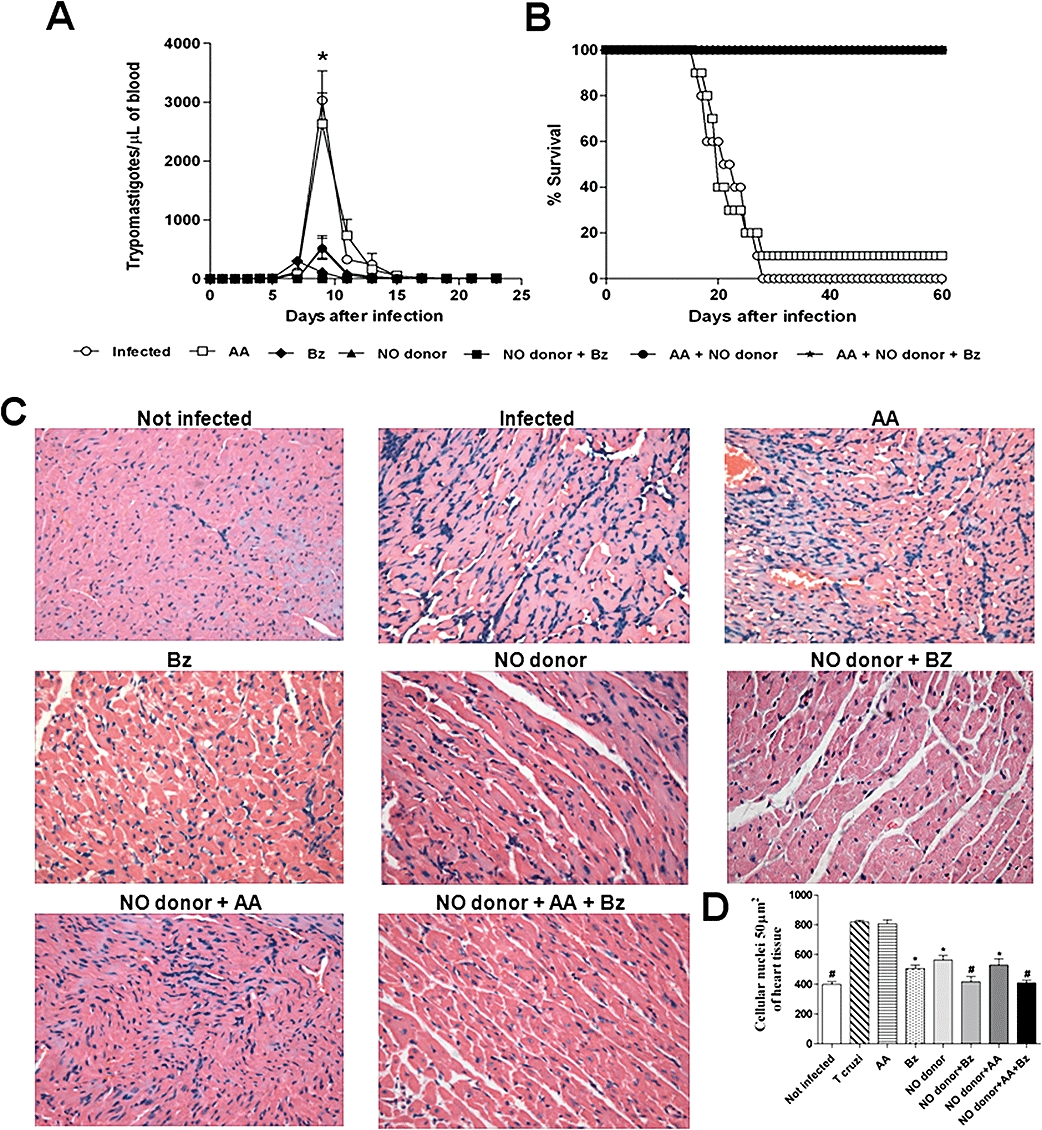Figure 5.

Treatment with trans-[RuCl([15]aneN4)NO]2+ suppresses parasitaemia, mortality and myocarditis of mice infected with T. cruzi. Swiss mice were infected with 1 × 103 blood trypomastigotes of T. cruzi Y strain, followed by different treatment schedules: ascorbic acid (AA; 3.33 µmol·kg−1·day−1) alone, benznidazole (Bz; 385 µmol·kg−1·day−1) alone, NO donor trans-[RuCl([15]aneN4)NO]2+ (3.33 µmol·kg−1·day−1) alone, NO donor (3.33 µmol·kg−1·day−1) plus benznidazole (385 µmol·kg−1·day−1), NO donor (3.33 µmol·kg−1·day−1) in combination with ascorbic AA (3.33 µmol·kg−1·day−1) and the NO donor (3.33 µmol·kg−1·day−1) in combination with AA (3.33 µmol·kg−1·day−1) and Bz (385 µmol·kg−1·day−1). Treatment was started on day 5 p.i and was given daily on 20 consecutive days. The control group received PBS. Parasitaemia (A) and survival (B) were evaluated daily over a period of 60 days post-infection. Representative sections of cardiac tissue (C) 25 days after infection (the last day of treatment). Original magnification of microphotographs, ×400. Quantification of cellular nuclei per 50 µm2 of heart tissue (D) of non-treated and treated animals. Note the synergic effect of the NO donor with Bz in eliminating myocarditis in T. cruzi-infected mice (Figure 5C,D), regardless of the presence or absence of AA. Each point is the mean ± SEM and is representative of three independent experiments with similar results (n= 10). Statistically significant differences from control (P < 0.05) are denoted by *, #. For experimental details, refer to the legend in Table 1.
